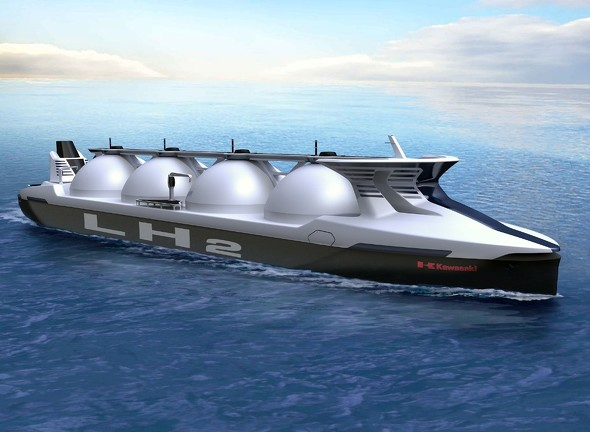

KHI: Realization of liquefied hydrogen carrier: Lignite to liquefied hydrogen
-“Advanced technology that South Korea and China cannot imitate”-
Kawasaki Heavy Industries:
We asked the pioneer, Kawasaki Heavy Industries, Managing Director Ichiro Kono.
Kawasaki Heavy Industries is serious about the hydrogen business.
Utilizing shipbuilding technology, we are constructing a liquefied hydrogen carrier.
Plays the role of Top Runner in the marine transportation sector of liquefied hydrogen.
Utilization of hydrogen energy:
Hydrogen energy utilization plays an important role in decarbonization programs.
Import liquefied hydrogen from Australia.
Japan:
In December 2017, the basic strategy for realizing a hydrogen society was announced.
In 2030, commercialize a hydrogen-fueled power plant.
Achieve “1 million kW of power generation for one nuclear power plant”.
Automotive field:
Production of 800,000 FCVs in 2030,
Produces and introduces 1,200 hydrogen fuel cell buses.
Preparation of liquefied hydrogen from lignite:
Lignite is produced from Australian lignite.
In 2030, it plans to transport 300,000 tons of liquefied hydrogen to Japan annually.
Hydrogen is taken out from lignite and liquefied locally.
Compress the volume of hydrogen to 1/800 of the gas.
Price reduction of liquefied hydrogen:
Currently, the price of liquefied hydrogen gas is estimated to be 30 yen per 1 ㎥.
In 2050, a mass transit vessel will be operational and the price will drop to 20 yen per 1 ㎥.
Lignite hydrogen project:
Currently, the lignite hydrogen project has started.
“Suiso Frontia, which carries 1250 m3 of liquefied hydrogen,” is under construction.
Demonstration test of transport safety of liquefied hydrogen will be conducted between Japan and Australia.
Completion of large carrier:
Based on this demonstration result, we plan to complete a large carrier.
A “spherical tank that can carry 160,000 ㎥ of liquefied hydrogen at a time” will be installed on the large carrier.
This is a world-leading initiative.
Double-structured tank like a thermos:
There are problems in putting a large liquefied hydrogen carrier to practical use.
It is “an extremely low temperature of minus 253 degrees in hydrogen liquefaction temperature”.
“We have to make tanks and pipes that can maintain this temperature and carry a large amount of them.”
Vacuum dual structure tank:
Kawasaki devised a pilot ship with a vacuum double-structured tank like a thermos.
“With this method, we were able to significantly improve the heat insulation performance.”
If you put boiling water in this double-structured tank for a month,
The heat insulation performance is so high that “the temperature inside the tank never drops”.
–ITmedia Business Online
https://www.itmedia.co.jp/business/articles/2105/07/news007.html